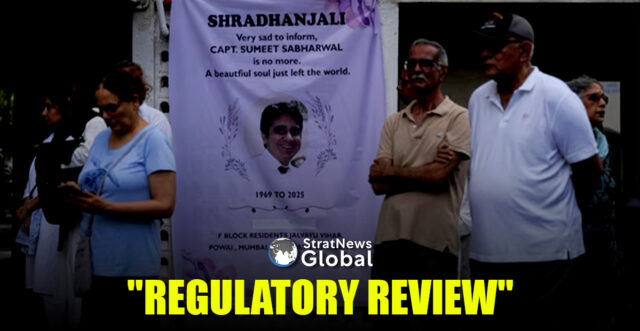India‘s aviation safety regulator, the Directorate General of Civil Aviation (DGCA), has requested Air India to provide the training records of the pilots and dispatcher involved in last week’s fatal crash that killed at least 271 people, according to government memos.
The DGCA also asked all flying schools to conduct training compliance checks, according to confidential memos, seen by Reuters.
The DGCA said the requests were part of a “regulatory” review of the accident, and also sought details of action taken following the watchdog’s audits of Air India in the last few months. It asked for the details to be provided by Monday.
It was not clear whether Air India had complied with the directive. The airline and the DGCA did not respond to Reuters’ requests for comment.
AI171 Disaster
The Boeing 787-8 Dreamliner bound for London with 242 people on board began losing height seconds after take-off in Ahmedabad on Thursday before crashing into nearby buildings. Everyone on board was killed, bar a single passenger, along with about 30 on the ground.
Sumeet Sabharwal, who the Indian government has said had 8,200 flying hours of experience and was also an Air India instructor, was the commanding pilot of flight AI171. His co-pilot was Clive Kunder, who had 1,100 hours of experience. Sabharwal’s funeral took place in Mumbai on Tuesday.
The watchdog requested training details and supporting documents for the pilots, as well as for the flight dispatcher. The memo did not elaborate on the type of documents required, but accident investigations commonly look at a crew’s training and qualifications, flight history, medical records, and any actions previously taken against them.
The memo did not raise any concerns with Air India’s operations, and some of the requests are standard in the aftermath of a major incident.
Dispatchers are DGCA-certified ground-based airline employees whose role includes flight planning, assessing weather and airspace conditions, and coordinating with the pilots.
While the request for pilot training data was sent by the DGCA, the accident investigation is being led by another wing of the aviation ministry, the Aircraft Accident Investigation Bureau.
Air India’s Chairman N. Chandrasekaran told staff on Monday that the incident should be a catalyst to build a safer airline.
DGCA Orders Safety Overhaul
The DGCA, through a separate memo dated June 16, also asked flying schools across the country to “strictly follow additional safety and operational measures.”
The regulator said instructors must check for compliance with procedures concerning training, maintenance and licensing, and coordinate flight plans with nearby airports in advance to ensure any emergencies are dealt with swiftly.
“Compliance will be assessed during audits/surveillance,” said the memo by the Directorate of Flying Training, reviewed by Reuters.
Stephanie Pope, the head of Boeing Commercial Airplanes, visited Air India’s headquarters near New Delhi and met the airline’s chairman to discuss the crash, Reuters reported on Monday.
The crash poses a new challenge for Air India, which the Tata Group bought in 2022 and has been trying to revamp, and Boeing, which is trying to rebuild public trust following a series of safety and production crises.
In a June 13 memo headed “updating airport emergency plan”, seen by Reuters, government-managed airports have also been asked to conduct a full-scale training exercise – typically an emergency drill – on June 30.
(With inputs from Reuters)







